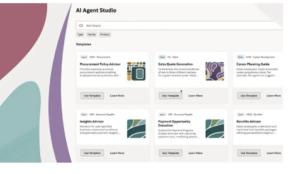The Surprisingly High Costs of Manual HR and Payroll Processes
February 14, 2024
For HR and Payroll organizations, it’s clear that many administrative processes are required and necessary for their teams to fulfill their duties and responsibilities to the organization and its employees. No matter how much we might not care for these administrative tasks, they remain necessary for the organization to remain in compliance, to carry out needed functions like payroll and benefits admin, and to make sure that employees are being paid correctly and on time. And the truth is that many of these processes will always be required of HR and Payroll, and in fact they tend to grow in number over time, as regulations and laws change.
So, taking steps to invest in modern technology to automate, streamline and reduce errors in these kinds of processes is an investment that continues to reap benefits and add value out into the future. Plus, over time, the ROI of these investments increases, making the business case to invest in new technologies more compelling. Organizations will always have to monitor time and attendance, pay employees correctly, and monitor their benefits and such. Since these (and other) functions are eternal so to speak, making them accurate, cost effective, efficient, and assets to a high-functioning organization is a win-win for everyone.
Why focus on administrative and compliance related tasks? Because sadly in many HR and Payroll organizations a significant level of manual and repetitive data entry processes remains in place. And they are costing organizations significantly. Recently, Ernst & Young conducted an extensive study to estimate the total costs associated with completing manual HR tasks. That study revealed the average cost of a single point of data entry is $4.78.
This cost figure is trending up over time; in 2021, the average cost was $4.70. In 2019, it was $4.51, and 2018, it was $4.39.
It is safe to assume that the trend of increasing cost of manual entry will continue. If we think about the wage increases and wage inflation of the last few years, where an employee’s time has become even more valuable, it seems like this data point will continue to trend upward.
The Hidden Costs of Manual Data Entry Errors
Human nature tells us that errors and inaccuracies naturally increase with the amount of manual data entry. But when data errors occur, especially when they are commonplace or repeated, they undermine employee and management confidence in HR, Payroll and the systems that are meant to safeguard and accurately reflect the employee’s personal information. For better or worse, employees and leadership simply expect HR and Payroll information to be accurate, timely and protected from unauthorized access. Payroll, especially, is expected to be “right” – the first time and every time. It’s only when it is incorrect, or late, that most employees take notice – and they will not react well!
But HR and Payroll errors do more than just reflect badly on the reputation of HR, they can frustrate employees so much that they could even consider making a change in their employment. After all, once you are paid incorrectly or late more than once, you might want to find an employer that can handle these functions as you expect. Plus, employees will usually share their challenges with HR and Payroll with their colleagues at work. They’ll want to know if they are the only one having issues, or if the problems are more widespread. Either way, the news of incorrect payroll or HR data starts to circulate throughout the organization, potentially making a small, isolated issue seem like one that was much larger than it really was.
Finally, errors leading to a lack in confidence in HR can also make it harder for HR to gain support for its other important programs and initiatives. When basic, administrative functions are not being managed with sufficient capability and effectiveness, gaining employee support and enthusiasm for more advanced and value-added activities like leadership development, upskilling, and DEI will become more difficult. In other words, HR and Payroll must get the basic “right” to be able to elevate the function and the perceived value in the organization.
Costs are Often Higher than Realized
According to the EY study, it takes an HR professional earning an average of $32 per hour approximately 19 minutes to record an employee’s I-9 information into their HR system, equaling a cost of $10.11. When you include printing, copying, or postage and the fact that around 14% of those I-9s include errors that need to be fixed, that amount increases to $11.97. Multiply this by the total number of employees and you’ll likely be stunned by the total costs.
As those figures for I-9 verification show, the potential costs of manual processing for mid-size and large organizations are staggering. Plus, it’s not just the cost of completing the process manually that organizations need to consider, it’s also the risk of error, which is always larger in manual processing due to simple human nature, that is an important factor here. The regulators and relevant authorities don’t really care if your HR administrator had hundreds of manual entries to make in that day, and two or three of them contained errors, but 98% were correct. You don’t get a pass on that.
The Automation Opportunity
Some of the costs of manual processes, and the associated errors they lead to, are less quantifiable but are still important. Manual errors in processes like new employee onboarding and setting up employee benefits also can negatively impact employee trust. Let’s briefly examine these processes here.
Onboarding is such an important part of the employee experience, and can help set up the employee for success, and a potentially long-term relationship with the organization, or if done poorly, can lead to longer time to productivity, failure to adequately learn and understand company processes and culture, and in more extreme examples, lead new employees to leave the organization altogether.
Onboarding is also a process with many required and specific tasks, both externally required, like setting up tax information, and company-specific, like obtaining access to needed facilities, equipment, and systems. These kinds of information processes are all good candidates for automation as they are generally well-defined, consistent, and repeatable across locations and employee types.
Employee benefits also represent a great opportunity for increased use of automation. Technology can be leveraged to present the employee with their benefit plans and options, show comparisons among the various benefit election decisions, and automate the process of enrolling the employee and their dependents in important benefit coverage. Employees usually care deeply about benefits, and getting this right the first time must be considered a fundamental goal for HR organizations.
How Manual Data Entry Inhibits Talent Management
While the discussions of manual HR and Payroll data entry tend to focus on administrative and compliance related tasks, they also impact important talent management processes like performance reviews, promotions, and succession planning. In these talent management processes the prevalence of manual data collection and distribution presents its own set of problems and challenges.
Internal talent management processes for promotions, compensation review, employee positioning on talent assessments, and promotions usually lean on documentation in the form of performance reviews, received feedback from managers and peers, and evaluation of potential compared to peers. Collecting, evaluating, and distributing this information to the people who need it can be extremely difficult when the data is created manually, stored on local drives or databases, and is not always checked for accuracy or completeness. Doing a simple exercise of say calculating the salary budget costs if the organization granted all employees who scored 4 or more on a 5-point performance scale a 7% increase next year would be extremely time-consuming and difficult, if all the performance management data was created manually and stored in document of local spreadsheets. And that is just one simple example.
Making important decisions that impact people’s careers and their livelihoods should not be based on scores of manually generated documents and files. The potential for error, and for negative repercussions is simply too great.
Using Technology to Empower HR and Employees
Overreliance on manual data entry often leads to increased errors, additional time to resolve and complete processes, and elevated costs to the organization. Errors, delays, costs and the associated hit on budgets and overall profits are all disengagement events for the organization and its employees. No one wants to spend their time doing manual entries, or tracking down files and documents, or explaining to an employee why their payroll is incorrect, or their dependents were not correctly set up with benefit coverage. Ultimately, too many of these kinds of errors, or job roles that by design require too much of these manual entry steps may drive good employees to leave the organization.
Modern technology when appropriately implemented can empower employees by giving them access to their own information, by defining rules and workflows that ensure transactions will be complete and accurate, and by making required information for decision making available to those employees who need it. All of this empowers employees by giving them confidence in their data, the HR and Payroll organization’s ability to manage the function and allowing them to focus on their jobs – and supports them as they strive for success in their jobs.
Generally speaking, investments in technology that can automate, control, and reduce or eliminate errors tend to provide a positive return fairly quickly, and then over time continue to benefit the organization as we have seen the cost of manual processes continues to climb. Depending on the organization, it would not be unheard of to see payoff periods as short as 3 – 6 months, and then overall return on investments reach several multiples of the initial costs. Of course, every organization is unique, but in general, automation of manual, error-prone processes is a good investment for organizations. And it gets better over time.
If your organization, and HR and Payroll departments are still struggling with old or inadequate technology, (or no technology at all), and are feeling the pain of data entry errors, disengagement of HR and Payroll team members, and overall employee dissatisfaction with the HR tools that are available to them, I encourage you to attend a webinar on the subject I did with our friends at Paycom where we dive deep into these issues and more
You can register for the free webinar, “Manual HR Processes: The Silent Thief” – here.
How we can help
Led by Trish Steed and Steve Boese, H3 HR Advisors harnesses over 40 years of experience to delivery HCM insights and guidance to global organizations.
H3 HR Advisory services
By leveraging technology, analytics, and our deep industry knowledge we can help you to reposition your workforce and ensure that you have the right people with the right capabilities in the right roles to positively impact the growth of your business.
HR Happy Hour Podcast Network
Created in 2009, The HR Happy Hour Show is hosted by Steve Boese and Trish Steed and is the longest continuously running internet radio show and podcast on Human Resources, HR Technology, Talent Practices, Workplace and Leadership topics.
H3 HR Speaking Services
We work closely with every client to customize your content - keynotes, webinars, research, infographics, and buyer’s guides - to inspire, educate and inform the audience enabling you to reset and realign your organization for a talent-led breakthrough.
Get in touch
Talk to us today and find out how we can help you and your organization leverage HCM technology to attract, onboard, retain and manage top talent.




